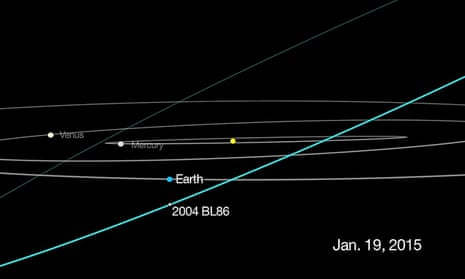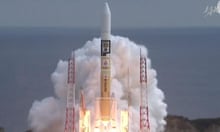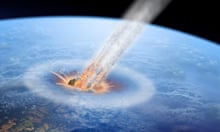An asteroid a third of a mile across will pass close by Earth on 26 January.
Codenamed 2004 BL86, the asteroid is expected to reach a point about 745,000 miles from our planet, or three times the distance to the moon.
Although easily far enough away to be safe, the fly-by counts as a narrow encounter in astronomical terms.
It will be the closest any asteroid comes to Earth until the predicted fly-past of another rock, 1999 AN10, on 7 August 2027.
Latest estimates suggest that AN10, which is 0.6 miles across, could approach as close as 19,000 miles.
Dr Don Yeomans, retiring head of Nasa’s Near-Earth Object Programme at the jet propulsion laboratory in Pasadena, California, said: “Monday 26 January will be the closest asteroid 2004 BL86 will get to Earth for at least the next 200 years.
“And while it poses no threat to Earth for the foreseeable future, it’s a relatively close approach by a relatively large asteroid, so it provides us a unique opportunity to observe and learn more.”
The asteroid is likely to be bright enough for amateur astronomers to spot with small telescopes and strong binoculars.
Yeomans said: “I may grab my favourite binoculars and give it a shot myself.
“Asteroids are something special. Not only did asteroids provide Earth with the building blocks of life and much of its water, but in the future, they will become valuable resources for mineral ores and other vital natural resources. They will also become the fuelling stops for humanity as we continue to explore our solar system.
“There is something about asteroids that makes me want to look up.”
Nasa’s Deep Space Network antennas at Goldstone, California, and the Arecibo Observatory in Puerto Rico will be used to obtain science data and radar-generated images of the asteroid.
Dr Lance Benner, who will lead the Goldstone radar observations, said: “When we get our radar data back the day after the fly-by, we will have the first detailed images.
“At present, we know almost nothing about the asteroid, so there are bound to be surprises.”
The asteroid was discovered on 30 January 2004 by astronomers operating the Lincoln Near-Earth Asteroid Research survey telescope in White Sands, New Mexico.
Nasa detects, tracks and characterises asteroids and comets using both ground- and space-based telescopes.
The Near-Earth Object Programme, also known as Spaceguard, searches for objects that might potentially pose a hazard to the Earth.



Comments (…)
Sign in or create your Guardian account to join the discussion